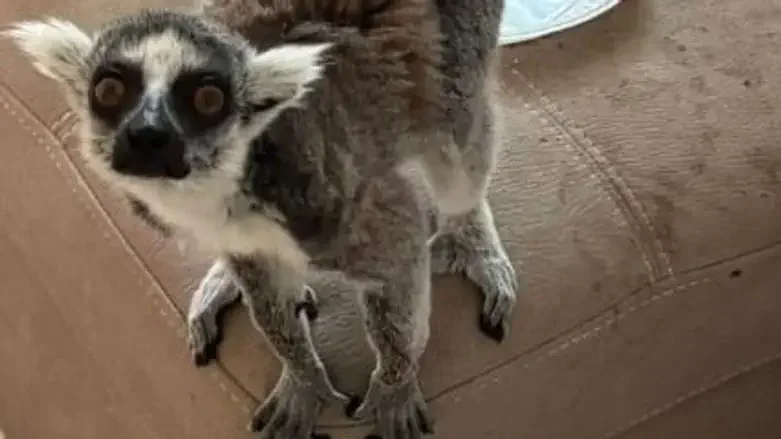
The Shocking Discovery of Endangered Lemurs and Exotic Animals in Israel
In a startling breach of wildlife regulations, Israeli authorities have uncovered a series of illegal holdings of exotic animals in a private residence in Netanya. This discovery marks a significant moment for wildlife protection, as it is the first time critically endangered species, particularly ring-tailed lemurs, have been identified in such a setting within Israel.
During an investigation linked to an explosive device incident in Even Yehuda, police raided the home of a suspect and were met with a shocking assortment of wildlife. In addition to the ring-tailed lemur, they discovered several exotic parrots, Egyptian chameleons, finches, and even a stuffed gazelle. The police's initial investigation had focused on criminal activities; however, the presence of these animals peeled back layers of a more alarming story about wildlife trafficking and animal abuse.

Uri Laniel, the head of the Wildlife in Captivity Unit at the Israel Nature and Parks Authority (INPA), condemned these actions as severe cases of animal abuse. He expressed concern over the lemur's health, stating that the animal was kept in unsuitable conditions, isolated from social interaction, and poorly fed. This situation not only highlights the cruelty towards these complex beings but also raises alarms about the increase in illegal wildlife ownership in the country.
Previously, lemurs were primarily confined to zoos and specialized wildlife facilities. The fact that one has been reportedly kept as a pet at a private residence is a shocking deviation from established norms. Furthermore, the chameleons discovered during this raid pose a significant ecological risk, as they could become invasive species threatening local fauna.

This incident is part of a broader pattern of wildlife seizures across Israel, as authorities step up efforts to combat animal trafficking and illegal captivity. Just days earlier, police had intercepted vervet monkeys and cubs being smuggled into the country, raising concerns about a potential spike in black-market wildlife trade.
As the INPA embarks on the task of rehabilitating these animals, the case serves as a stark reminder of the fragility of wildlife and the ongoing battle against illegal wildlife trade. “We remain committed to rescuing wild animals held illegally in captivity,” Laniel reassured the public, emphasizing the need for stricter penalties to deter such actions in the future.
As we contemplate the implications of this case, it begs the question: how can we enhance awareness and protection for endangered species? Readers are invited to share their thoughts on this pressing issue and discuss ways we can collectively protect our planet's wildlife.